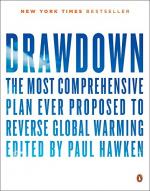|
This section contains 1,461 words (approx. 4 pages at 400 words per page) |

|
Alexander von Humboldt
Alexander von Humboldt was a German scientist born in 1769. In 1799 he journeyed to Latin America and created the idea of isotherms on weather maps, lines that delineate pressure and temperature. His expedition brought him into virtually untouched wilderness where he catalogued and sketched plants and animals from the modern-day Ecuador region. Beyond this intricate detailing, he viewed the natural surroundings as having an intricate web of interdependent life—a web that human inhabitants disturb.
In 1829 Humboldt went on a six-month journey across Russia. As in Latin America, he took plant and animal samples and sketched the landscape and people. And, again, as in Latin America, he viewed the intricate nature of nature. He noted the rapid disappearance of forests surrounding mining centers and advised against the use of steam engines to drain the mines for its intense fuel consumption of trees. In his two-volume detail...
|
This section contains 1,461 words (approx. 4 pages at 400 words per page) |

|




